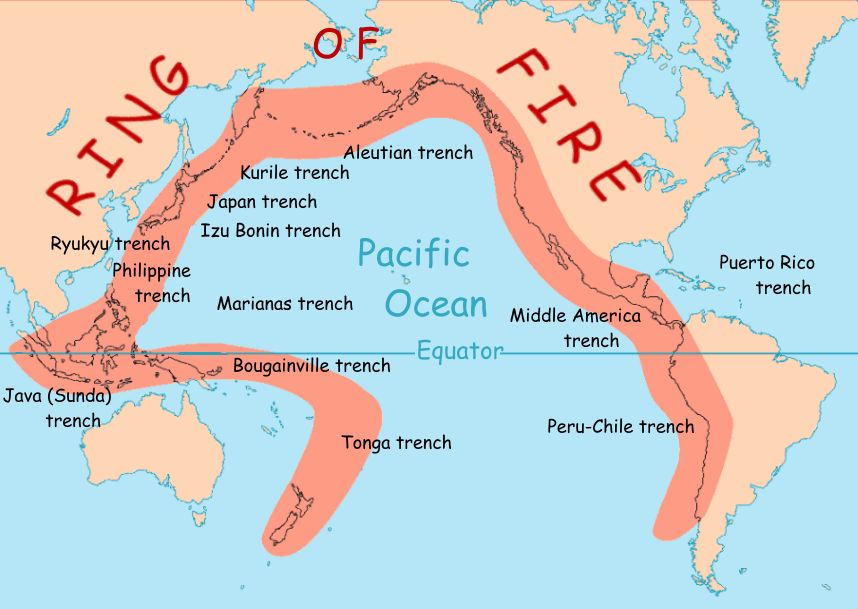Published on: January 20, 2022

CONCEPT CHECK : PACIFIC RING OF FIRE
CONCEPT CHECK : PACIFIC RING OF FIRE

- Also called as Pacific rim, Circum-Pacific Belt
- Area along the Pacific Ocean that is characterised by active volcanoes and frequent earthquakes.
- Home to about 75 per cent of the world’s volcanoes – more than 450 volcanoes
- 90 per cent of the world’s earthquakes occur here.
- Length is over 40,000 kilometres and traces from New Zealand clockwise
- Almost circular arc covering Tonga, Kermadec Islands, Indonesia, moving up to the Philippines, Japan, and stretching eastward to the Aleutian Islands, then southward along the western coast of North America and South America.
- The area is along several tectonic plates including the Pacific plate, Philippine Plate, Juan de Fuca plate, Cocos plate, Nazca plate, and North American plate.
- The movement of these plates or tectonic activity makes the area witness abundant earthquakes and tsunamis every year.
- Volcanic arcs and oceanic trenches partly encircling the Pacific Basin form the so-called Ring of Fire. The trenches are shown in blue-green. The volcanic island arcs, although not labelled, are parallel to, and always landward of, the trenches. For example, the island arc associated with the Aleutian Trench is represented by the long chain of volcanoes that make up the Aleutian Islands.
- Along much of the Ring of Fire, tectonic plates move towards each other creating subduction zones. One plate gets pushed down or is subducted by the other plate. This is a very slow process – a movement of just one or two inches per year. As this subduction happens, rocks melt, become magma and move to Earth’s surface and cause volcanic activity.

